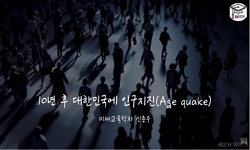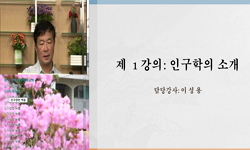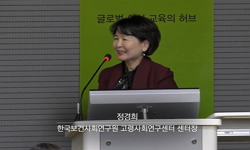In the long term trend, author try to observe the grain price of Song Dynasty and confirmed that it was deeply related to a population tendency. The grain price of Northern Song Dynasty showed a terraced rising trend and in case of Southern Song Dynas...
http://chineseinput.net/에서 pinyin(병음)방식으로 중국어를 변환할 수 있습니다.
변환된 중국어를 복사하여 사용하시면 됩니다.
- 中文 을 입력하시려면 zhongwen을 입력하시고 space를누르시면됩니다.
- 北京 을 입력하시려면 beijing을 입력하시고 space를 누르시면 됩니다.
https://www.riss.kr/link?id=A76161724
- 저자
- 발행기관
- 학술지명
- 권호사항
-
발행연도
2005
-
작성언어
Korean
-
주제어
송대 ; 물가 ; 양세부담 ; 토지세부담 ; 인구 ; 농업생산 ; 동전 ; 화폐공급 ; 화폐수요 ; 부가세 ; 세부담의 지역편차 ; 宋代 ; 物價 ; 兩稅負擔 ; 土地稅負擔 ; 人口 ; 農業生産 ; 銅錢 ; 貨幣供給 ; 貨幣需要 ; 附加稅 ; 稅負擔의 地域偏差 ; Song Dynasty ; price ; land tax burden ; population ; agriculture production ; coin ; currency supply ; currency demand ; surtax ; tax burden by the difference of areas
-
등재정보
KCI등재
-
자료형태
학술저널
- 발행기관 URL
-
수록면
61-103(43쪽)
-
KCI 피인용횟수
2
- 제공처
- 소장기관
-
0
상세조회 -
0
다운로드
부가정보
다국어 초록 (Multilingual Abstract)
In the long term trend, author try to observe the grain price of Song Dynasty and confirmed that it was deeply related to a population tendency. The grain price of Northern Song Dynasty showed a terraced rising trend and in case of Southern Song Dynasty showed a slight rising trend.
If we observe the price on the aspect of short term trends, following factors are admitted. In Renjong(仁宗) period, the grain price rose suddenly because there carne peace and the growth of population and currency supply. Author can interpret that the speedy rising of the grain price of that period gave a severe blow to salary men, handicraft workers and special product producers because of social division of labor. So in Shenjong(神宗) period the government intervened in supply and demand of currency positively. At the same time through the enforcement of New Policy, they increased the supply of the grain. From the result, the grain price could keep stabilization to the level of Renjong(仁宗) period.
In Huijong(徽宗) period, the grain price and the silk price increased largely, on account of issue of the large denomination coin and increase of financial expenditure. But the rising ratio of grain price was much larger than the silk price. May be author suppose that it raised many problems to the society in those days. Also the price level of that period reflected on Southern Song periods.
In Southern Song Dynasty, choice of grain seeds, improvement of the grain store capacity, administrative effort against the natural disaster had been done from Northern Song Dynasty which helped stabilization of the grain price. By the way, people became to spend much silk because of the spread of luxurious consumption, therefore rising ratio of silk price was larger than the grain price.
In Tang and Song Dynasty, prices became to rise due to growth of the population. Innovation of that period was asserted by ahead scholars, author can interpret it in the aspect of price movement. Disorganization of Equal Land System, the development of the possession of large land, the frontier movement and the expansion of irrigation works are all related with rising trend of the grain price. That is, speculation on the land was increased because of a sudden rise of the grain price, by reason of that peasantry was dissolved under the Equal Land System, at the same time it brought the development of the manor and appearance of the tenant. Besides the grain price rose because demand of the grain was increased continually on account of the organization of professional soldier, the increase of soldier, the development of cities and the expansion of social specialization.
In case of argument on the burden of double tax system in Song Dynasty, the peasantry of Southern Song Dynasty had increased of their income and reduction of burden the double tax relatively to the peasantry of Northern Song. But in Southern Song Dynasty, various surtax was imposed to the peasantry. Therefore ahead scholars interpreted that the peasantry of Southern Song had a heavy tax burden. But due to the increase of land clearing and amount of production, though we add the double tax to whole surtax(加耗米, 和買絹, 折帛錢, 免役錢), the tax burden which occupied from income per a Mou(畝) was very low.
In case of Jiangxi Wuzhou(江西路, 撫州), that was a semi-developed area, the whole tax burden of that places was about 2.5% no matter how high author may estimate. Besides in Song Dynasty, there was a difference among areas on the tax burden due to the difference grain price among areas. At the advanced area where the grain price and the density of population was high whose tax burden was low in comparison with underdeveloped area.
목차 (Table of Contents)
- Ⅰ. 緖言
- Ⅱ. 宋代의 物價趨勢
- Ⅲ. 宋代 穀物과 貨幣의 需給
- Ⅳ. 宋代 物價變動의 要因
- Ⅴ. 宋代 物價와 兩稅負擔
- Ⅰ. 緖言
- Ⅱ. 宋代의 物價趨勢
- Ⅲ. 宋代 穀物과 貨幣의 需給
- Ⅳ. 宋代 物價變動의 要因
- Ⅴ. 宋代 物價와 兩稅負擔
- Ⅵ. 結論
동일학술지(권/호) 다른 논문
-
- 동양사학회
- 閔厚基(Min Hoo-Ki)
- 2005
- KCI등재
-
- 동양사학회
- 金慶浩(Kim Kyung-Ho)
- 2005
- KCI등재
-
- 동양사학회
- 崔韶子(Choi So-Ja)
- 2005
- KCI등재
-
- 동양사학회
- 李在鈴(Lee Jae-Ryoung)
- 2005
- KCI등재
분석정보
인용정보 인용지수 설명보기
학술지 이력
| 연월일 | 이력구분 | 이력상세 | 등재구분 |
|---|---|---|---|
| 2023 | 평가예정 | 계속평가 신청대상 (등재유지) | |
| 2018-01-01 | 평가 | 우수등재학술지 선정 (계속평가) | |
| 2015-01-01 | 평가 | 등재학술지 유지 (등재유지) |  |
| 2011-01-01 | 평가 | 등재학술지 유지 (등재유지) |  |
| 2009-01-01 | 평가 | 등재학술지 유지 (등재유지) |  |
| 2007-01-01 | 평가 | 등재학술지 유지 (등재유지) |  |
| 2005-01-01 | 평가 | 등재학술지 유지 (등재유지) |  |
| 2002-01-01 | 평가 | 등재학술지 선정 (등재후보2차) |  |
| 1999-07-01 | 평가 | 등재후보학술지 선정 (신규평가) |  |
학술지 인용정보
| 기준연도 | WOS-KCI 통합IF(2년) | KCIF(2년) | KCIF(3년) |
|---|---|---|---|
| 2016 | 1.63 | 1.63 | 1.34 |
| KCIF(4년) | KCIF(5년) | 중심성지수(3년) | 즉시성지수 |
| 1.22 | 1.08 | 1.624 | 0.46 |




 KCI
KCI DBpia
DBpia







